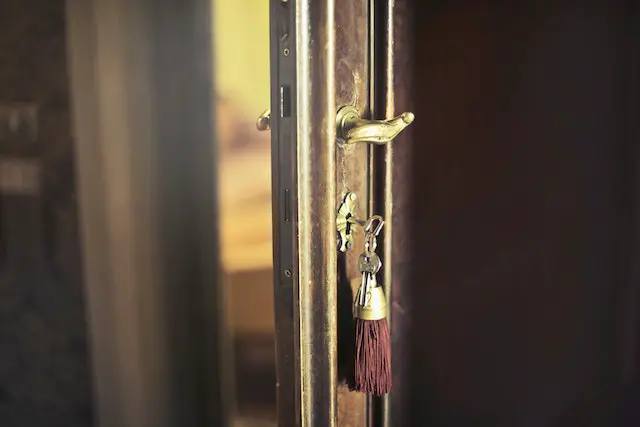Meaning of Prop a Door Open
Prop a door open is a neologism that refers to keeping a door in an open position for ease of access. It may also refer to a charitable act or an action that reduces the spread of smoke, flame, and heat. You might also see this word in a dictionary.
When someone says, “Prop a door open,” they are simply informing another individual that they would like an opening in the wall or door. This is done for various reasons, such as for air or for another individual to get through.
For example, if someone enters a room and the door is open but faces the outside with no wall, they might say, “Prop that door open!”. This means they would like a wall or something blocking the door so that it can’t slam shut while they are inside. It’s important to note, though, that if there were an opening somewhere on the side of the door (or at least one not facing directly outwards), they would ask you to prop it against something.
This is not the same as “Prop a door open for ventilation,” which means you should open it or leave it open as an air vent. This is because doors are usually only opened if weather conditions are bad, so you would prop them open for ventilation. For example, if you have a screen door and no screen, it would be OK to prop it open for ventilation since this would allow the air to come in but keep the bugs out.
If you’re asking someone to prop a door open for ventilation, you should know that they will most likely say, “Prop a door open – ventilate it!” and walk away, expecting you to know what they mean. It is unnecessary to do this, though, as it’s just fine to say, “Prop the door open – ventilate it!” and have them do it.
To Keep a Door in an Open Position
Propped-open doors can compromise the safety of people, equipment, and buildings. While they can facilitate movement and allow cleaning and maintenance, they should be closed as soon as possible. Leaving doors propped open can also let smoke and fire spread throughout a building. Smoke is produced by all types of fires and can quickly affect the entire structure if one door becomes unlocked.
A door-propping device can be inserted between the edge of a door and the door’s frame. This device props the door by attaching it to metal screws or jambs. It can also be placed on the hinge plate of the door frame.
Another solution is to place a coin between the hinges and the door frame. The coin should fit between the door frame and the hinges. This cannot be easy if the door is propping open by itself. Ideally, the coin should be placed in the upper hinge.
To Facilitate Ease of a Student
To facilitate ease of entry for a student, the door of the classroom or building can be propped open to allow the student to enter or exit the classroom. However, a door propped open must be shut immediately after use. If the door remains open, it will be a potential source of smoke and fire.
To Reduce the Spread of Smoke, Heat, and Flame
Propped-open doors are not a safe solution for fire emergencies. They compromise the safety of occupants and could compromise the structure of the building. While a propped open door may be convenient during maintenance and cleaning operations, it can be counterproductive and defeat fire protection measures. Therefore, propped-open doors should be closed immediately.
While in a burning building, be aware of the door’s temperature. It may be a sign of fire on the other side if it is too hot. If the door is cold, it is not yet hot enough to cause danger. If the door feels too hot, do not open it. Keep your head low and face away. If you must exit the building, close the door to reduce the spread of smoke, heat, and flame.
Using a door wedge can reduce the risk of a fire. The NFPA 80 standard for fire doors gives guidance on how to install and maintain these devices. In addition to installing door wedges, a fire door must be labeled to warn users not to prop it open.
Properly closing a door to reduce the spread of smoke, heat, or flame is essential for fighting a fire. Smoke moves upward and fills a room last, reaching the floor last. By keeping a door closed, the smoke can’t penetrate the room, and you will have time to signal for help.




















